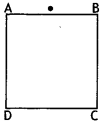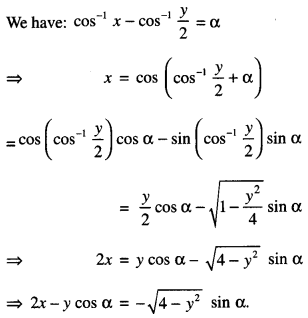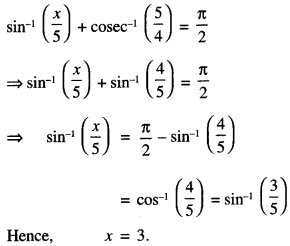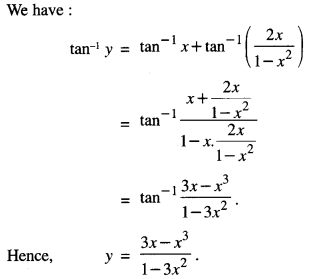MCQ Questions for Class 7 Maths Chapter 5 Lines and Angles with Answers
Students can access the NCERT MCQ Questions for Class 7 Maths Chapter 5 Lines and Angles Pdf free download aids in your exam preparation and you can get a good hold of the chapter. Use MCQ Questions for Class 7 Maths with Answers during preparation and score maximum marks in the exam. Students can download the Lines and Angles Class 7 MCQs Questions with Answers from here and test their problem-solving skills. Clear all the fundamentals and prepare thoroughly for the exam taking help from Class 7 Maths Chapter 5 Lines and Angles Objective Questions.
Lines and Angles Class 7 MCQs Questions with Answers
Students are advised to solve the Lines and Angles Multiple Choice Questions of Class 7 Maths to know different concepts. Practicing the MCQ Questions on Lines and Angles Class 7 with answers will boost your confidence thereby helping you score well in the exam.
Explore numerous MCQ Questions of Lines and Angles Class 7 with answers provided with detailed solutions by looking below.
Question 1.
(180°, 5°) pair of angle is given :
(a) complementary
(b) supplementary
(c) None of these
Answer
Answer: (c) None of these
As sum of two angles is neither 90° nor 180°.
Question 2.
What is the measure of the complement of 65°?
(a) 25°
(b) 55°
(c) 65°
(d) 45°
Answer
Answer: (a) 25°
Question 3.
Complementary to 0° angle is :
(a) 90°
(b) 95°
(c) 75°
(d) None of these
Answer
Answer: (a) 90°
Sum of complementary angles is 90°.
Question 4.
Identify which of the following pairs of angles are complementary.
(a) 65°, 115°
(b) 130°, 50°
(c) 63°, 27°
(d) 112°, 68°
Answer
Answer: (c) 63°, 27°
Question 5.
Complementary to 70° angle is :
(a) 20°
(b) 30°
(c) 40°
(d) None of these
Answer
Answer: (a) 20°
Sum of complementary angles is 90°.
Question 6.
What happens to the measurement of an angle after the extension of its arms?
(a) Doubles
(b) Triples
(c) Remains the same
(d) Cannot be said
Answer
Answer: (c) Remains the same
Question 7.
Complementary to 95° angle is :
(a) 5°
(b) 0°
(c) 10°
(d) None of these
Answer
Answer: (d) None of these
None of these, as sum of complementary angles is 90°.
Question 8.
What is the supplement of 105°
(a) 65°
(b) 75°
(c) 85°
(d) 95°
Answer
Answer: (b) 75°
Question 9.
Find the value of x in the given figure if lines \( p \parallel q \) :

(a) x = 60°
(b) 50°
(c) 75°
(d) none of these
Answer
Answer: (a) x = 60°
If two lines are parallel then corresponding angles are equal.
Question 10.
Identify which of the following pairs of angles are supplementary.
(a) 45°, 45°
(b) 63°, 27°
(c) 112°, 68°
(d) 80°, 10°
Answer
Answer: (c) 112°, 68°
Question 11.
Measure of the supplement of 0° :
(a) 180°
(b) 90°
(c) 175°
(d) None of these
Answer
Answer: (a) 180°
Sum of supplementary angles is 180°.
Question 12.
What do we call an angle whose measurement is exactly equal to 0°?
(a) An obtuse angle
(b) A straight angle
(c) A zero angle
(d) A right angle
Answer
Answer: (c) A zero angle
Question 13.
If in the given figure \( l \parallel m \) then :

(a) x = 50°
(b) x = 60°
(c) No relation
Answer
Answer: (a) x = 50°
These are alternating angles.
Question 14.
What are the lines which lie on the same plane and do not intersect at any point called?
(a) Perpendicular lines
(b) Intersecting lines
(c) Parallel lines
(d) Collinear lines
Answer
Answer: (c) Parallel lines
Question 15.
In the given figure value of x is :

(a) 55°
(b) 45°
(c) 65°
(d) None of these
Answer
Answer: (a) 55°
Vertically opposite angles are equal.
Question 16.
Find the angle, which is equal to its complement.
(a) 45°
(b) 25°
(c) 35°
(d) 30°
Answer
Answer: (a) 45°
Question 17.
Indicate vertically opposite angles :

(a) (a, d)
(b) (a, b) and (c, d)
(c) (a, c) and
(d) None of these
Answer
Answer: (b) (a, b) and (c, d)
Lines AB and CD are intersecting each other.
Question 18.
How many rays can be drawn from a given point?
(a) 2
(b) 5
(c) 8
(d) Infinitely many
Answer
Answer: (d) Infinitely many
Question 19.
What do we call an angle which exactly measures 90°?
(a) An obtuse angle
(b) An acute angle
(c) A right angle
(d) A reflex angle
Answer
Answer: (c) A right angle
Question 20.
If two angles are supplementary then the sum of their measures is __________.
(a) 45°
(b) 180°
(c) 90°
(d) 360°
Answer
Answer: (b) 180°
Question 21.
Measure of the supplement of 100° :
(a) 70°
(b) 75°
(c) 80°
(d) None of these
Answer
Answer: (c) 80°
Sum of supplementary angles is 180°.
Question 22.
The sum of all angles around a point is
(a) 0°
(b) 180°
(c) 360°
(d) 90°
Answer
Answer: (c) 360°
Question 23.
Which instrument is used to measure or construct angles?
(a) Compasses
(b) Scale
(c) Protractor
(d) Set squares
Answer
Answer: (c) Protractor
Question 24.
Measure of the supplement of 55° :
(a) 45°
(b) 125°
(c) 100°
(d) None of these
Answer
Answer: (b) 125°
Sum of supplementary angles is 180°.
Question 25.
A line that intersects two or more lines at distinct points is called
(a) parallel
(b) transversal
(c) intersecting
(d) None of these
Answer
Answer: (b) transversal
Question 26.
Complementary pair of angles :
(a) 70+ 20
(b) 30 + 45
(c) 0 + 95
(d) None of these
Answer
Answer: (a) 70+ 20
Sum of two angles is 90°.
Question 27.
Find the angle, which is equal to its supplement.
(a) 60°
(b) 90°
(c) 120°
(d) 30°
Answer
Answer: (b) 90°
Question 28.
Identify supplementary pair of angles :
(a) 0° – 90°
(b) 30°, 150°
(c) 45° – 145°
(d) None of these
Answer
Answer: (b) 30°, 150°
If sum of two angles is 180°, i.e., pair of supplementary.
Question 29.
If two lines intersect at a point, then the vertically opposite angles are always ________ .
(a) supplementary
(b) equal
(c) unequal
(d) none of these
Answer
Answer: (b) equal
Question 30.
If in the given figure \(\angle \) x = \(\angle \) y then :

(a) \( l \parallel m \)
(b) l ≠ m
(c) none of these
Answer
Answer: (a) \( l \parallel m \)
Two lines are parallel if alternating angles are equal.
Question 31.
If two adjacent angles are supplementary, then they form _________ .
(a) a linear pair of angles
(b) vertically opposite angles
(c) Corresponding angles
(d) a ray
Answer
Answer: (a) a linear pair of angles
Question 32.
In the given value of x is :

(a) 35°
(c) 15°
(b) 90°
(d) None of these
Answer
Answer: (c) 15°
Sum of linear pair is 180°.
Question 33.
What is the measure of the complement of 41°?
(a) 135°
(b) 15°
(c) 49°
(d) None of these
Answer
Answer: (c) 49°
Question 34.
Find sum of angle x and y if in the given figure \( l \parallel m \):

(a) 90°
(b) 180°
(c) 175°
(d) none of these
Answer
Answer: (b) 180°
If two lines are parallel then sum of interior opposite angles is 180°.
Match the following:
Question 1.
| (a) 30° 60° | 1. Linear pair |
| (b) 90° 90° | 2. Complementary angles |
| (c) 30° 150° | 3. Supplementary angles |
| (d) 45° | 4. Acute angle |
Answer
Answer:
| (a )30° 60° | 2. Complementary angles |
| (b) 90° 90° | 1. Linear pair |
| (c) 30° 150° | 3. Supplementary angles |
| (d) 45° | 4. Acute angle |
Question 2.
| (a) 100° | 1. 125° |
| (b) 90° | 2. 65° |
| (c) 55° | 3. 90° |
| (d) 115° | 4. 80° |
Answer
Answer:
| (a) 100° | 4. 80° |
| (b) 90° | 3. 90° |
| (c)55° | 1. 125° |
| (d) 115° | 2. 65° |
State whether the given statements are true or false:
Question 1.
Can two acute angles form a linear pair ?
Answer
Answer: false
Question 2.
Can two obtuse angles form a linear pair ?
Answer
Answer: false
Question 3.
Can two right angles forms a linear pair ?
Answer
Answer: true
Question 4.
Are two alternate angles equal if a transversal intersects two parallel lines ?
Answer
Answer: true
Question 5.
One acute and one obtuse angle can form a linear pair.
Answer
Answer: true
Question 6.
Two obtuse angles are complementary.
Answer
Answer: false
Question 7.
One acute and one obtuse angle can be supplementary.
Answer
Answer: true
Question 8.
Sum of linear pair is 180°.
Answer
Answer: true
Fill in the blanks:
1. The sum of the measures of two angles is 180°, the angles are called ………… angles.
Answer
Answer: supplementry
2. Two lines intersect and the vertically opposite angles so formed are ……………….
Answer
Answer: equal
3. Adjacent angles have a common …………… and a common …………………
Answer
Answer: vertex, arm
4. If two adjacent angles are supplementary, they form a ………………
Answer
Answer: linear pair
5. The sum of the measures of two angles is 90°, the angles are called ………….. angles.
Answer
Answer: complementry
6. Line segment has ………… end points.
Answer
Answer: two
7. Two angles forming a linear pair are …………….
Answer
Answer: supplementry
With the help of given figure, Answer the following questions:

Question 1.
Interior angles
Answer
Answer: \(\angle 3\), \(\angle 4\), \(\angle 5\), \(\angle 6\)
Question 2.
Exterior angles
Answer
Answer: \(\angle 1\), \(\angle 2\), \(\angle 7\), \(\angle 8\)
Question 3.
Pairs of corresponding angles
Answer
Answer: \(\angle 1\) and \(\angle 5\), \(\angle 2\) and \(\angle 6\), \(\angle 3\) and \(\angle 7\), \(\angle 4\) and \(\angle 8\)
Question 4.
Pairs of alternate interior angles
Answer
Answer: \(\angle 3\) and \(\angle 6\), \(\angle 4\) and \(\angle 5\)
Question 5.
Pairs of alternate exterior angles
Answer
Answer: \(\angle 1\) and \(\angle 8\), \(\angle 2\) and \(\angle 7\)
Question 6.
Pair of interior angles on the same side of the transversal
Answer
Answer: \(\angle 3\) and \(\angle 5\), \(\angle 4\) and \(\angle 6\)
We believe the knowledge shared regarding NCERT MCQ Questions for Class 7 Maths Chapter 5 Lines and Angles with Answers Pdf free download has been useful to the possible extent. If you have any other queries regarding CBSE Class 7 Maths Lines and Angles MCQs Multiple Choice Questions with Answers, feel free to reach us via the comment section and we will guide you with the possible solution.
MCQ Questions for Class 7 Maths Chapter 5 Lines and Angles with Answers Read More »



















